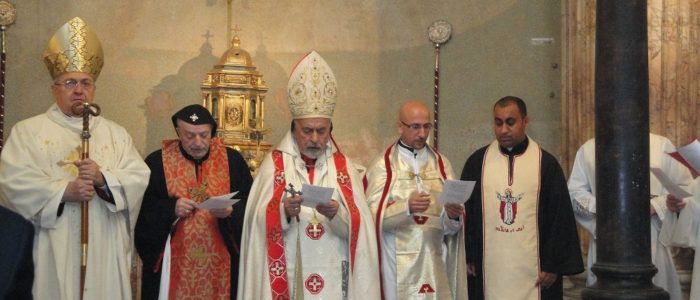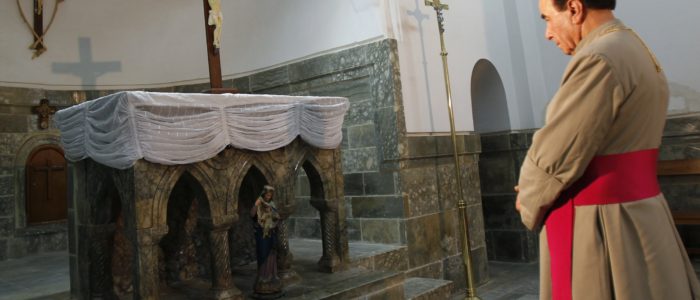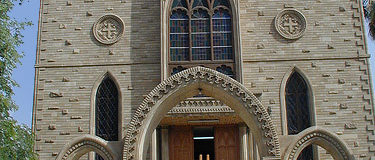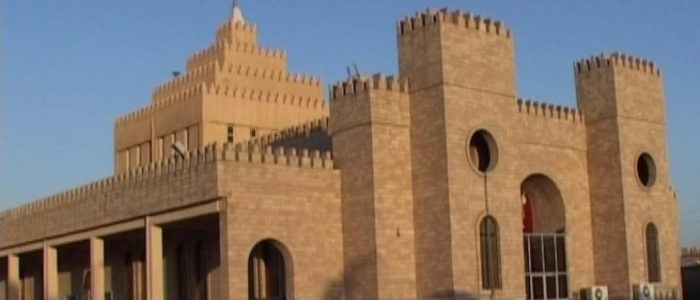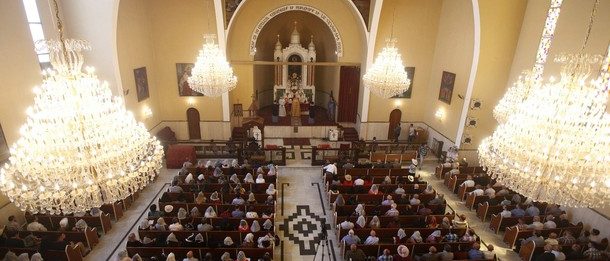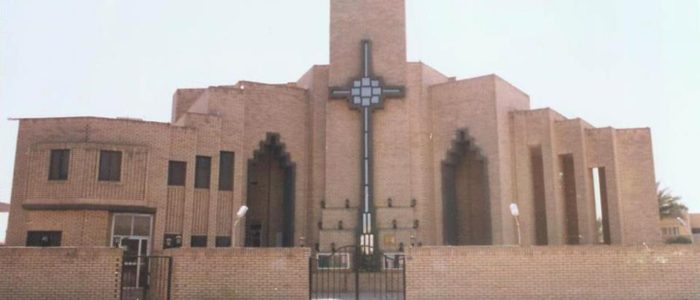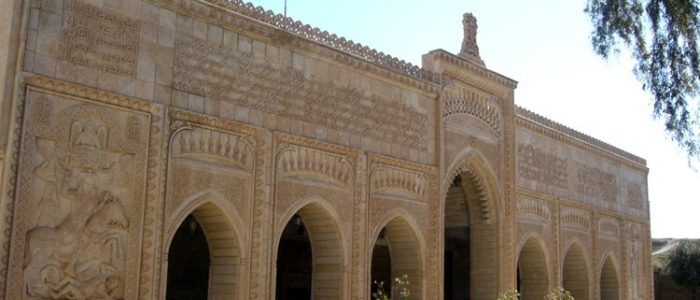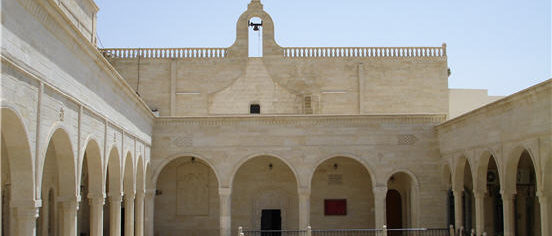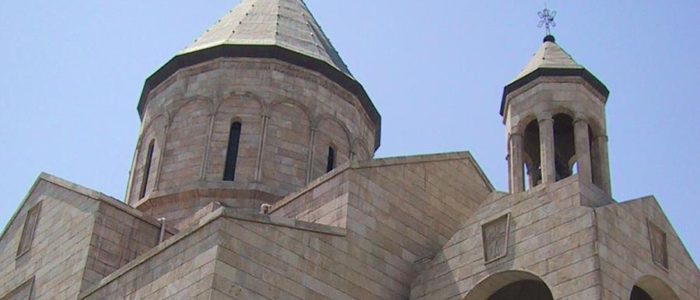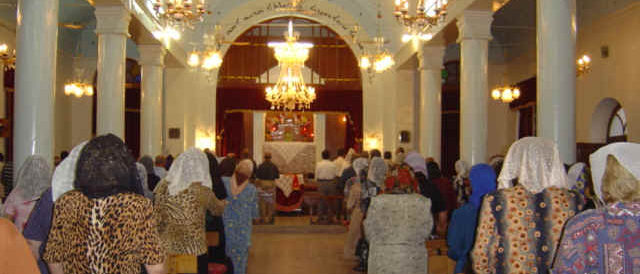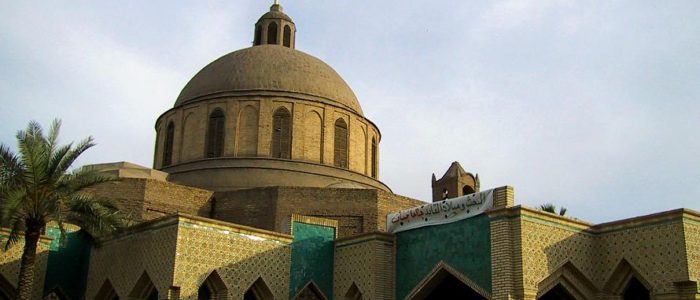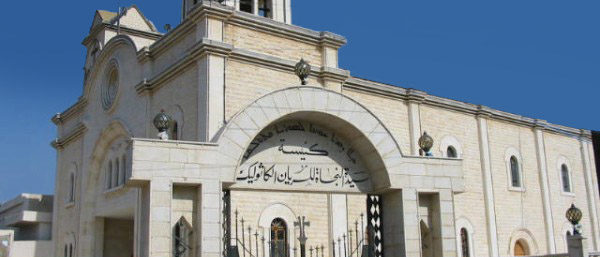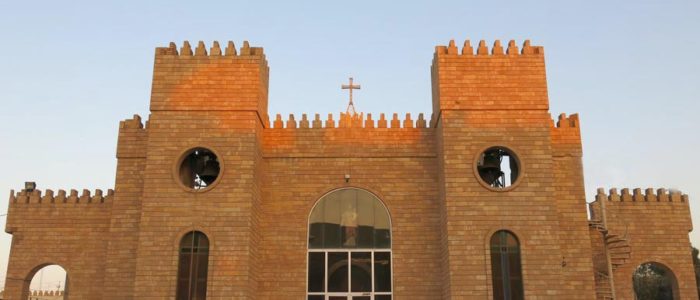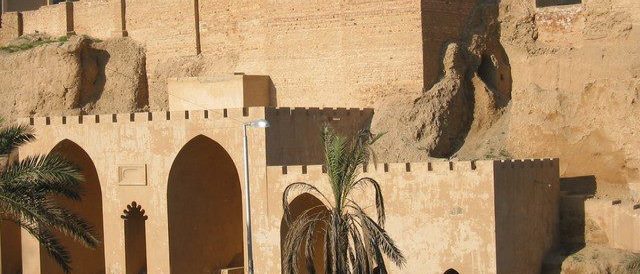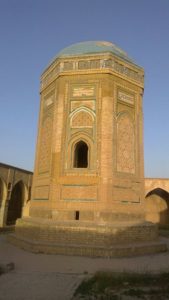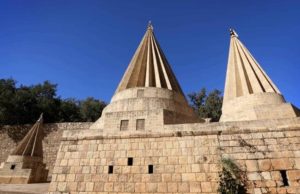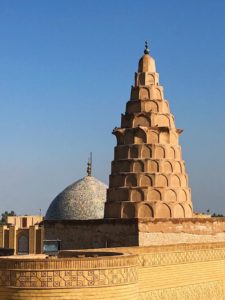Chrches and Temples
Christianity
The Christians of Iraq are considered to be one of the oldest allegedly surviving continuous Christian communities in the world. The vast majority are Eastern Aramaic-speaking ethnic Assyrians; however, there is a very small community of Armenians, too.
In Iraq, Christians numbered about 1,500,000 in 2003, representing just over 5% of the population of the country. They numbered over 1.4 million in 1987 or 8% of the population. Chaldean Catholics form the biggest group among the Christians of Iraq.
Iraqi Christians live primarily in the large cities like Baghdad, Basra, Mosul, Erbil and Kirkuk, as well as in Assyrian towns and regions of northern Nineveh Plains in the north of Iraq.
Eastern Rite Assyrian Churches
The majority of the Iraqi Christians belong to the branches of Syriac Christianity whose followers are exclusively ethnic Assyrians.
Chaldean Catholic Church
- Syriac Orthodox Church
- Syriac Catholic Church
- Ancient Church of the East
- Assyrian Church of the East
- The Churches of the Armenian rite
Followers of these churches are exclusively ethnic Armenians
Armenian Apostolic Church
- Armenian Catholic Church
- The other churches and communities
Followers of these churches are an ethnic mix of Arabs and Kurds
Greek Orthodox Church of Antioch
- Melkite Greek Catholic Church (Byzantine rite)
- Roman Catholic Church (Latin rite)
- Protestant churches
History of Christianity in Iraq
Christianity was brought to Iraq in the 1st century AD by the Apostles Thomas and Addai (Thaddaeus) and his students; Aggagi and Mari. Thomas and Thaddeus belonged to the twelve Apostles. Iraq’s Eastern Aramaic speaking Assyrian Christian communities are believed to be among the oldest in the world.
The Assyrian people adopted Christianity in the 1st century AD and Assyria became the center of Eastern Rite Christianity and Syriac literature from the 1st century AD until the Middle Ages.
Northern Iraq remained predominantly Assyrian, Eastern Aramaic speaking and Christian until the end of the 14th century. The Assyrian Church of the East has its origin in what is now South East Turkey and Assuristan (Sassanid Assyria). By the end of the 13th century there were twelve Nestorian dioceses in a strip from Peking to Samarkand. When the 14th-century warlord of Turco-Mongol descent, Timur (Tamerlane), conquered Persia, Mesopotamia and Syria, the civilian population was decimated. Timur had 70,000 Assyrian Christians killed in Tikrit, and 90,000 more in Baghdad. A new epoch began in the 17th century when Emir Afrasiyab of Basra allowed the Portuguese to build a church outside of the city.
Iraqi Christians’ role in the Islamic Civilization
In the early centuries after the Arab Islamic conquest, native Assyrian (known as Ashuriyun by the Arabs) scholars and doctors played a major role in Iraq, in what used to be the Umaiyd and Abbasid Caliphates. They held prominent positions as doctors, book keepers, architects, painters, musicians, treasurers and most importantly, thinkers.
Historically, it is evident that the rise of the great Islamic Civilization was based on the Arab conquests of Mesopotamia. This part of the world at around 650 AD, was at the peak of civilization. All the knowledge and inventions of civilization in astrology, Chemistry, Medicine, Mathematics, philosophy, civil laws, architecture and arts, were well established for centuries. Iraq in particular, was predominantly christian when the Muslims arrived. The Christians of Hira and the Kingdom of Lakhim welcomed the new religion and many Arab Christians adopted Islam. Islam became a vessel which contained and tolerated all religions and ethnicities. Centuries after Islam, Christians continued to be the majority of Iraq’s population. Christian scholars were the only source to access Greek philosophy and literature. Iraqi christians who planned the legendary capital of Baghdad, and many christian architects where to design the glorious palaces of the Chalifas at Wasit, Kufa, Baghdad and, not to forget, the magnificent fortress at Ukhaider. For centuries under the Umaiyds and Abbasids, Christians were able to thrive in an atmosphere of tolerance and social justice.
Turkmens
Iraqi Turkmens are the descendants of various waves of Turkic migration to Mesopotamia dating from the 7th century until Ottoman rule. The first wave of migration in the 7th century when some 5,000 Turkmen soldiers were recruited in the Muslim armies of Ubayd-Allah ibn Ziyad; however, most of today’s descendants of these first migrants have been assimilated into the local Arab population. The second wave of migrants were the Turks of the Great Seljuq Empire; finally, the third wave, and largest number of Turkmen migrants into Iraq arose during the Ottoman Empire. With the conquest of Iraq by Suleiman the Magnificent in 1534, followed by Sultan Murad IV’s capture of Baghdad in 1638, a large influx of Turks settled down in the region.
Iraqi Turks are considered the third-largest ethnic group in Iraq. According to the 1957 census, Arabs formed the largest ethnicity followed by Kurds (13%) and Iraqi Turkmen (9%).
The Iraqi Turkmens predominantly live in the north of Iraq, especially in Tal Afar, Mosul, Arbil, Altunkupri, Kirkuk, and Baghdad.
[wpanchor id=”1your_id”]
Yazidis
The Yazidis (also Yezidi, Êzidî, Yazdani) are a Kurdish ethno-religious community whose syncretic but ancient religion Yazidism (a kind of Yazdânism) is linked to Zoroastrianism and ancient Mesopotamian religions. They live primarily in the Nineveh Province of northern Iraq, a region once part of ancient Assyria and capital of the Neo-Assyrian Empire. Additional communities in Armenia, Georgia and Syria have been in decline since the 1990s as a result of significant migration to Europe, especially to Germany. The Yazidis are monotheists, believing in God as creator of the world.
Historically, the Yazidis lived primarily in communities in locales that are in present-day Iraq, Syria, and Turkey, and also had significant numbers in Armenia and Georgia.
The bulk of the Yazidi population lives in Iraq, where they make up an important Iraqi minority community. Estimates of the size of these communities vary significantly, between 70,000 and 500,000. They are particularly concentrated in northern Iraq in the Nineveh Province. The two biggest communities are in Shekhan, northeast of Mosul, and in Sinjar, at the Syrian border 80 kilometres (50 mi) west of Mosul. In Shekhan is the shrine of Sheikh Adi ibn Musafir at Lalish. During the 20th century, the Shekhan community struggled for dominance with the more conservative Sinjar community.
Mandaeans
Mandaeans (Modern Mandaicو Mandaʻnāye, Arabic: الصابئة المندائيون aṣ-Ṣabi’a al-Mandā’iyūn) are an ethnoreligious group indigenous to the alluvial plain of southern Mesopotamia and are followers of Mandaeism, a Gnostic religion. The Mandaeans were originally native speakers of Mandaic, a Semitic language that evolved from Eastern Middle Aramaic, before many switched to colloquial Iraqi Arabic and Modern Persian. Mandaic is mainly preserved as a liturgical language. During the century’s first decade the indigenous Mandaic community of Iraq, which used to number 60–70,000 persons, collapsed in the aftermath of the Iraq War of 2003; most of the community relocated to nearby Iran, Syria and Jordan, or formed diaspora communities beyond the Middle East. The other indigenous community of Iranian Mandaeans has also been dwindling as a result of religious persecution over that decade.
There are several indications of the ultimate origin of the Mandaeans. Early religious concepts and terminologies recur in the Dead Sea Scrolls, and “Jordan” has been the name of every baptismal water in Mandaeism. This connection with early baptismal sects in the eastern Jordan region and the elements of Western Syrian in the Mandaean language attests to their Levantine origin. There are fewer indications of a relation between early Christians and Mandaeans, which make the connection more problematic.
The emigration of early Mandaeans from the Jordan Valley took place the latest at the second century. The migrants first went to Harran in Assyria and entered the southern provinces of Mesopotamia during the third century. It appears that Mani, the founder of Manichaeism, was partly influenced by the newcomers. The Mandaeans had also hostile relations with the Byzantine Church and the Babylonian Jews.
The pre-Iraq War, Iraqi Mandaean community was centered around Baghdad. Mandaean emigration from Iraq began during Saddam Hussein’s rule, but accelerated greatly after 2003.
Judaism
The history of the Jews in Iraq, Babylonian Jews, is documented from the time of the Babylonian captivity c. 586 BC. Iraqi Jews constitute one of the world’s oldest and most historically significant Jewish communities.
After the fall of Jerusalem, Babylon would become the focus of Judaism for more than a thousand years, and the place where Jews would claim home. The Jews of Babylon would even for the first time write prayers in a language other than Hebrew, such as the Kaddish, written in Judeo-Aramaic – a harbinger of the many languages in which Jewish prayers in the diaspora would come to be written in, such as Greek, Arabic, and Turkish.
Most Jews to this day rely on the quality of the Babylonian Talmud over that of the Galilee from the same period. The Jewish community of Babylon established Jewish Babylonian academies at Nehardea, (Anbar province, today)which later was moved to Pumbedita (now Fallujah) and Sura (South of Iraq).
During the rule of Alexander the great and the Seleucid era, many jews were serving in the army whom were given great advantages and benefits in rebuilding Babylon.
During the Parthian era, Babylonian priests were honored high priest over Judeans.
During the Sassanids the Jewish community was given a relative freedom of religion and many advantages although suffered from the continuous hostility between the Ottoman and Sassanid empires.
The Jewish community of Babylon included Ezra the scribe, whose return to Judea in the late 6th century BC is associated with significant changes in Jewish ritual observance and the rebuilding of the Temple in Jerusalem. The Talmud was compiled in Babylonia, modern Iraq today.
From the Babylonian period to the rise of the Islamic caliphate, the Jewish community of Babylon thrived as the center of Jewish learning. Only during the Umayyads and the late abbasid caliphs and the Mongol invasions, jews began to witness discrimination during the Middle Ages.
In 1884 there were 30,000 Jews in Baghdad and by 1900, 50,000, comprising over a quarter of the city’s total population. In the late 19th century, the Jewish community established modern schools.
In the 20th century, Iraqi Jews played a major role in the early days of Iraq’s independence. Also, played an important role in shaping the new country’s financial, administrative and social structure. Starting in 1930’s, the jews of Iraq came under threat from pro Nazi movement especially among the younger generation. In 1950 the Jewish population in Iraq was estimated to be between 200,000-300,000. In later years following the war of 1968 between the Arab nations and Israel the population declined considerably due to political pressures and many were forced to immigrate to Israel leaving behind thousands of years of existence and a rich cultural heritage.

